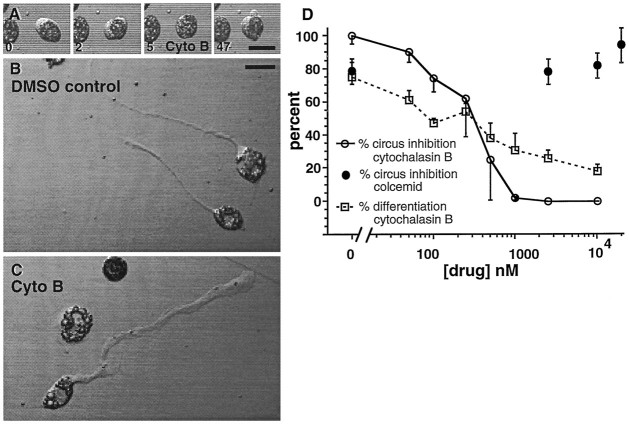Fig. 5.
Cytochalasin B abolishes circus movements but does not prevent neuronal differentiation. A, Circus movements are rapidly and reversibly blocked by 5 μmcytochalasin B, implicating an actin microfilament-dependent process. Transmission images of a neurectoderm circus cell at 5 hr in culture acquired at times (in minutes) noted at bottom left of each frame. Application and washout were at 2.5 min and 14 min, respectively. B, Normal morphology of neurons cultured in medium containing 0.05% DMSO. C, Neuronal morphology of cells cultured in medium containing 2.5 μmcytochalasin B; application from 1.5–18.0 hr in culture. Processes are broader and growth cones lack filopodia. D, Dose–response relations for the inhibition of circus activity and neuronal differentiation by cytochalasin B and colcemid. The percentage of circus cells that differentiate into neurons was assayed with the two-time-point assay. Cytochalasin B stopped circus movements at concentrations >1.0 μm (open circles), whereas colcemid had no effect at concentrations as high as 25 μm (filled circles). Chronic blockade of circus activity by higher concentrations of cytochalasin B reduces the number of cells that acquire a neuronal morphology, but does not completely prevent neuronal differentiation (squares). Chronic application of colcemid produced gross abnormalities in neuronal morphology, making neuronal differentiation difficult to score (data not shown).

